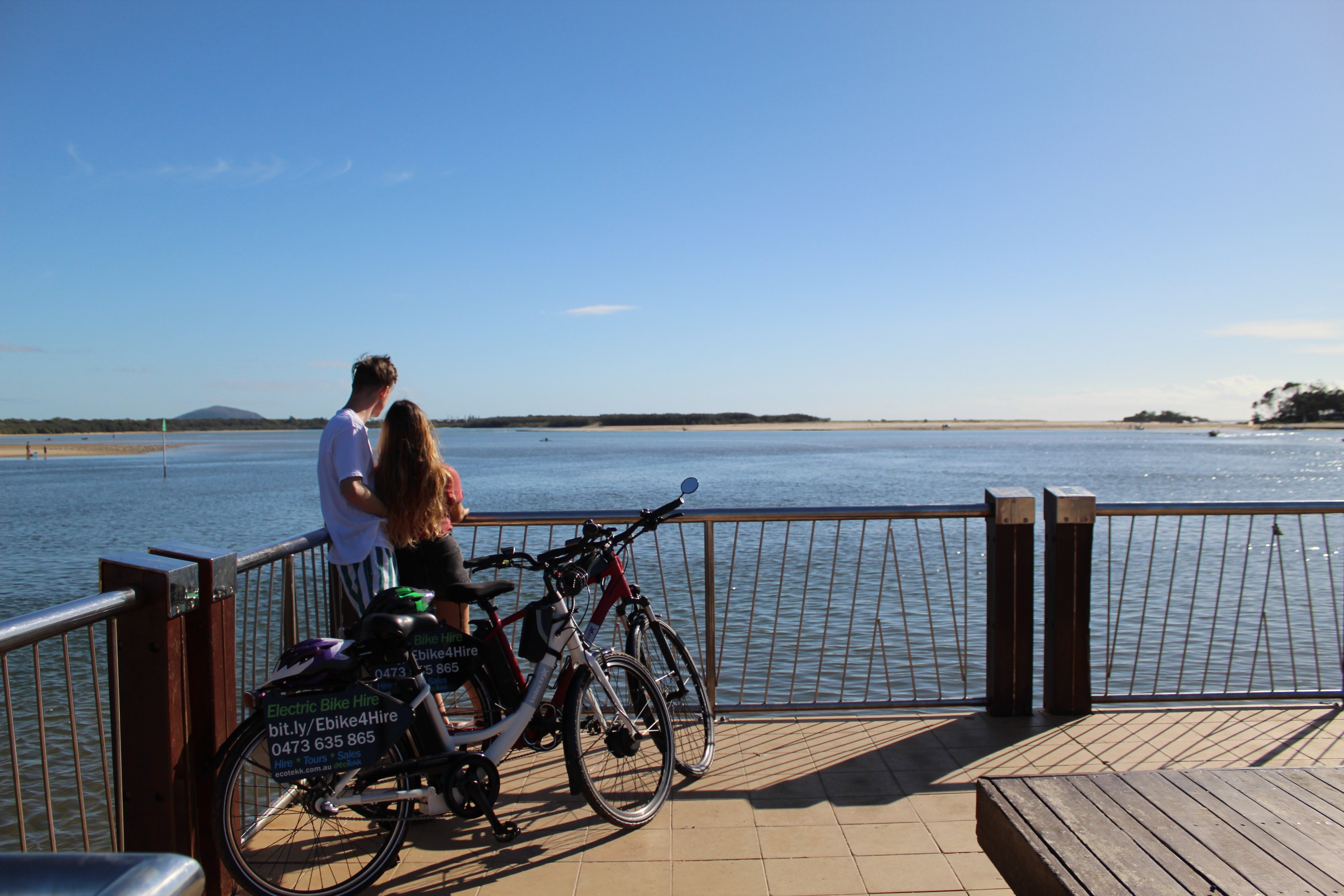
River to River, Land and Sea E-bike Tour in Sunshine Coast
Embark on a unique and educational adventure with our guided river-to-river e-bike tour. Led by a knowledgeable marine biologist guide, you'll ride an e-bike from the mouth of the Mooloolah River to the Maroochy River, exploring the iconic Mooloolaba Spit Rock Wall, HMAS Brisbane Lookout site, and Cotton Tree Park pier. Immerse yourself in the rich history and geography of the coastal environment, gaining insight into the integral role these rivers played in the development of the Sunshine Coast Region. This easy, entry-level ride along concrete pathways takes you from Charles Clarke Park to the mouth of the Mooloolaba River Spit Rock Wall, up to the lookout at Alexandra Headlands, and onto the Maroochy River at Cotton Tree then return. Discover the beauty of the region while enjoying the convenience and comfort of our electric bikes. Book your tour now for an unforgettable experience!
Options
River to River, Land and Sea E-bike Tour in Sunshine Coast
What's included in River to River, Land and Sea E-bike Tour in Sunshine Coast
(Subject to Option Inclusions)Itinerary
Mooloolaba
'Mooloolaba' is thought to have derived either from 'mulu' the Aboriginal word for snapper fish, or 'mullu' meaning red-bellied black snake. Originally the name 'Mooloolah Heads' was given to the area from the mouth of the Mooloolah River to the site of the present Charles Clarke Park on River Esplanade. The rock groyne was built in the early 1965 to facilitate pilot boats for the port of Brisbane.
The river of tears, a Dreamtime Legend about Maroochy, Nindery and Ccoolum The first inhabitants of the Maroochy district were the Aboriginal people of the Gubbi Gubbi / Kabi Kabi language group, whose lands stretched from Burrum River in the north, to Pine River in the south, and west to the Conondale Ranges. For over 20,000 years, the Gubbi Gubbi / Kabi Kabi people hunted in the surrounding ranges, fished the rivers and gathered seafood from the ocean..
Timber on the river Up until the late 1800s, the sole transport link from Brisbane to the Maroochy area was by boat. Timbergetters such as Petrie, Pettigrew, Low and Grigor arrived on the coast by boat in search of timber resources within the region. The early explorers used the rivers and creeks to access inland areas. They found a wealth of timber, including red cedar, beech and pine. From the 1870s, the Maroochy River was used to transport timber harvested from the inland areas and the Blackall Range. William Pettigrew used Maroochydore as a timber landing place from 1884, twenty years after he first established a depot with James Low and William Grigor, at Mooloolah Heads.
Inclusions
- Safety Helmets
- Use of bicycle
- Public transportation options are available nearby
- Specialized infant seats are available
- Not recommended for travelers with poor cardiovascular health
- Suitable for all physical fitness levels
- Contact @ecoTekkSC directly +61 473 635 865 to explore options for accommodating young children, including child seats, toddler seats, child trailers, or tag-along solutions.
Meet
Pickup and Dropoff
You will make your own way to the meeting points
Meeting / End Points
- The Booking Box, Shop 8 The Wharf Mooloolaba, 123 Parkyn Parade, Mooloolaba QLD 4557. Park in the Multi-Story Car Park and walk southeast into the Wharf complex. Go to the centre atrium area facing South and on the left, you will find the Booking Box.






